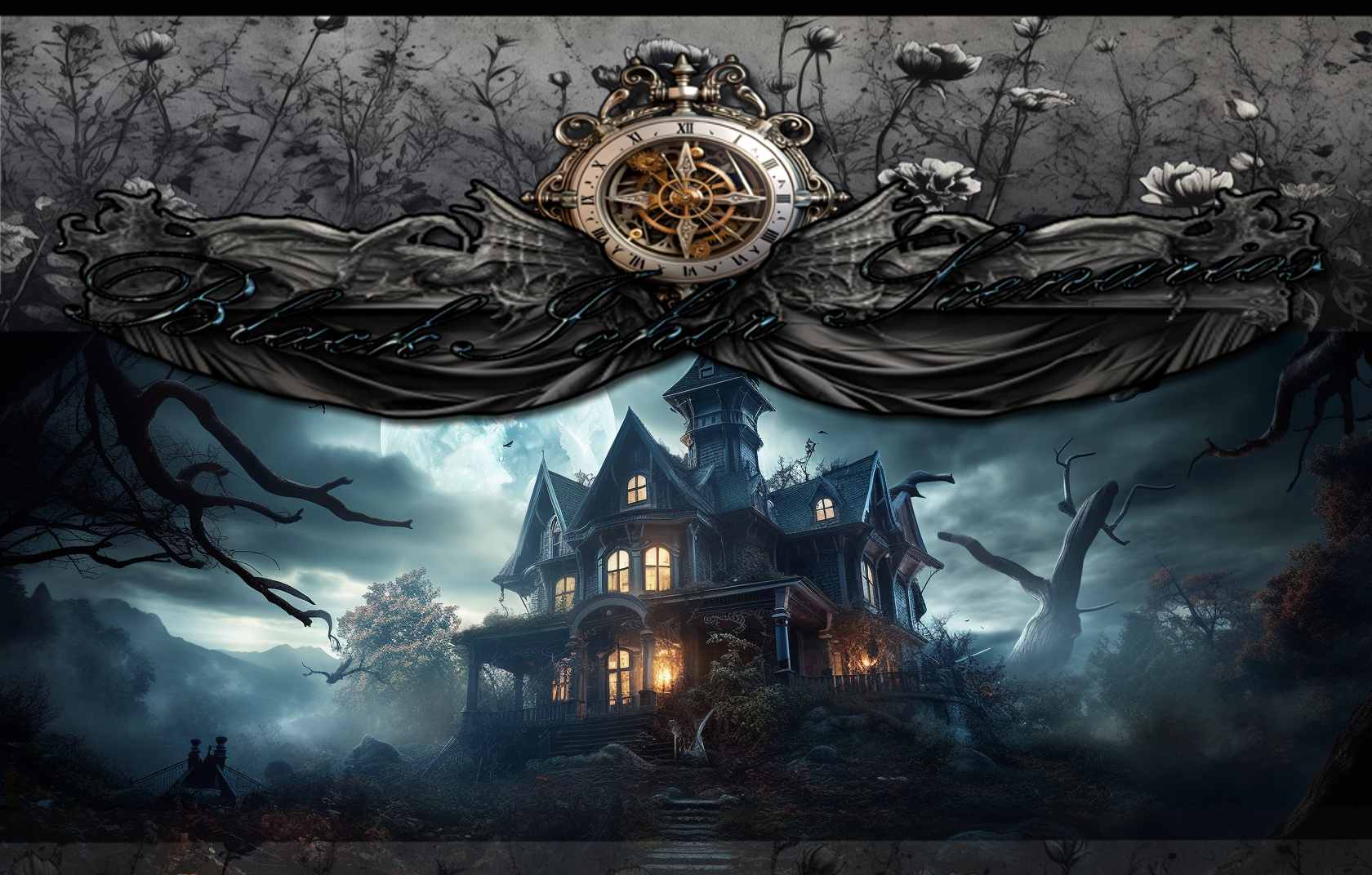Double Stick Blue Amber
Warning:
Black Ichor Scenarios include "soft" horror text and graphics.
It may not be suitable for children or the skittery to read.
Opinion of the writer: PG-13 material.
A Trap of Nature Study
Stickey Wicket Trap
- 1. The story begins with tree resin, a thick liquid produced by trees to protect against injury or disease. Initially, this resin is quite sticky, resembling the consistency of honey.
- 2. The shiny surface of the resin might mimic water, attracting thirsty insects like flies and mosquitoes.
- 3. Some resins release fragrances that mimic flowers or fruits, tempting insects seeking food or mates. Flying insects simply landing on the resin due to chance encounters.
- 4. Once an insect touches the resin, its sticky nature quickly entangles their legs and wings. The insect's efforts to escape only result in more resin flowing, making it more trapped. The insect's energy is often drained by this struggle, resulting in suffocation.
- 5. Fresh resin encases the entire insect. The amber fossilizes over millions of years, preserving the insect in incredible detail.
From the Trunk Desk of Milo Klein Dated Spring 1907 Secluded Rock, Dead Holler Isle For Posterity Sake Journal: Good Day.
Paleontologist Journal Monthly Paper October, 1907
Cathaleen's Blue Amber Gem Discovery
In the midst of her plant and flower research, Cathaleen Garamund stumbled upon multiple sediment traps. While on an expedition with her husband, Jason, she stumbled upon a 299 million-year-old impression fossil. Without realizing its worth, she nonchalantly packed the stone in her bag and departed from the region. Even though she intended to come back for further studies, she never did. The fossil, a unique firefly specimen was an intense Gass Sea blue and bioluminescent. Trapped in its resin the clear shape of a creature appeared to move in a beam of its own light. She collected Insects and other arthropods immobilized in peat, or paraffin. So she added the amber blue gem to her cabinet of oddities for a later use. She planned to make a piece of curative jewelry out of the rare find. Amber is said to be a powerful healer and cleanser of the body, mind and spirit. It also cleanses the environment. Amber is said to draw disease from the body, healing and renewing the nervous system and balancing the right and left parts of the brain. Initially, Cathaleen didn't realize that the creature trapped in the tree resin was only partly stuck. While in the creek and exposed to abrasion, the gem formed a bubble. The firefly, suspecting an escape, left behind a wing, a leg, and its light source. Instead of enlarging the bead it left, the light source diffused throughout a dark tunnel, resembling a fading wavefront moving away from its origin. The ever-expanding glow with its own dimming security system made the gem more valuable. Since she had no time to determine its function entirely, she slid it into a cabinet she bought a flea market in Blasmouth. Three years later, when she finally found the time to finish her jewelry task and study project, one of the beads was missing. Only a few of her family members knew about the small cabinet she kept in the Seasway cabin where Jason and Cathaleen kept their belonging while the Manor was being renovated. The only desperate family member was Lenny Garamund, but she couldn’t imagine that he would know the value of the Blue Amber gem.
Grayslate Laboratory Keep
Bioluminescence Connection
Cathaleen's Blue Amber Gems
Amber inclusions occur exclusively in areas where trees or resinous plants once existed, thus providing evidence of the connection between ancient insects and forests. In simple terms, insects encased in amber inhabited wooded or nearby areas. The presence of amber inclusions can be traced back to the Carboniferous period. Preserved insects in resin, dating back only a few hundred years, can also be found by scientists. Age is the primary factor that sets them apart.
Sediment Gem Value
Sediment trap stones are not a particular gemstone, but a group of stones that have trapped and preserved sediment over time. The scientific research potential of these stones lies in their ability to reveal information about past environments and climates.- Limestone or shale, excel at preserving sediment compared to others.
- Generally, older stones hold more value because they possess a longer environmental history.
- Stones from specific places, like ones previously under glaciers or oceans, can have greater worth.
- Stones that preserve an uninterrupted sedimentary record are of higher value compared to those showing gaps or disruptions.
- The bioluminescent disperal light properties that causes sleep is a negative reaction.
- Stones with scientific value are more valuable than those without.
Cathaleen's suggestion that her gem's unique lighting distribution feature is not tested or accurate. With due respect (she was one of those researchers and authors I never knew, but relied on everyday) I argue the resin that suffocates fireflies is stickier than she initially believed. It's tiring to work with hot substances that bind my fingers and knot hair. The Shadows are well known for their glue factory products. A small amount of resin coated on an ordinary stone can significantly hinder an investigator, researcher, or inventor. If a curse or affectation is blended into the glue, the outcome is intentional and lethal.








Comments